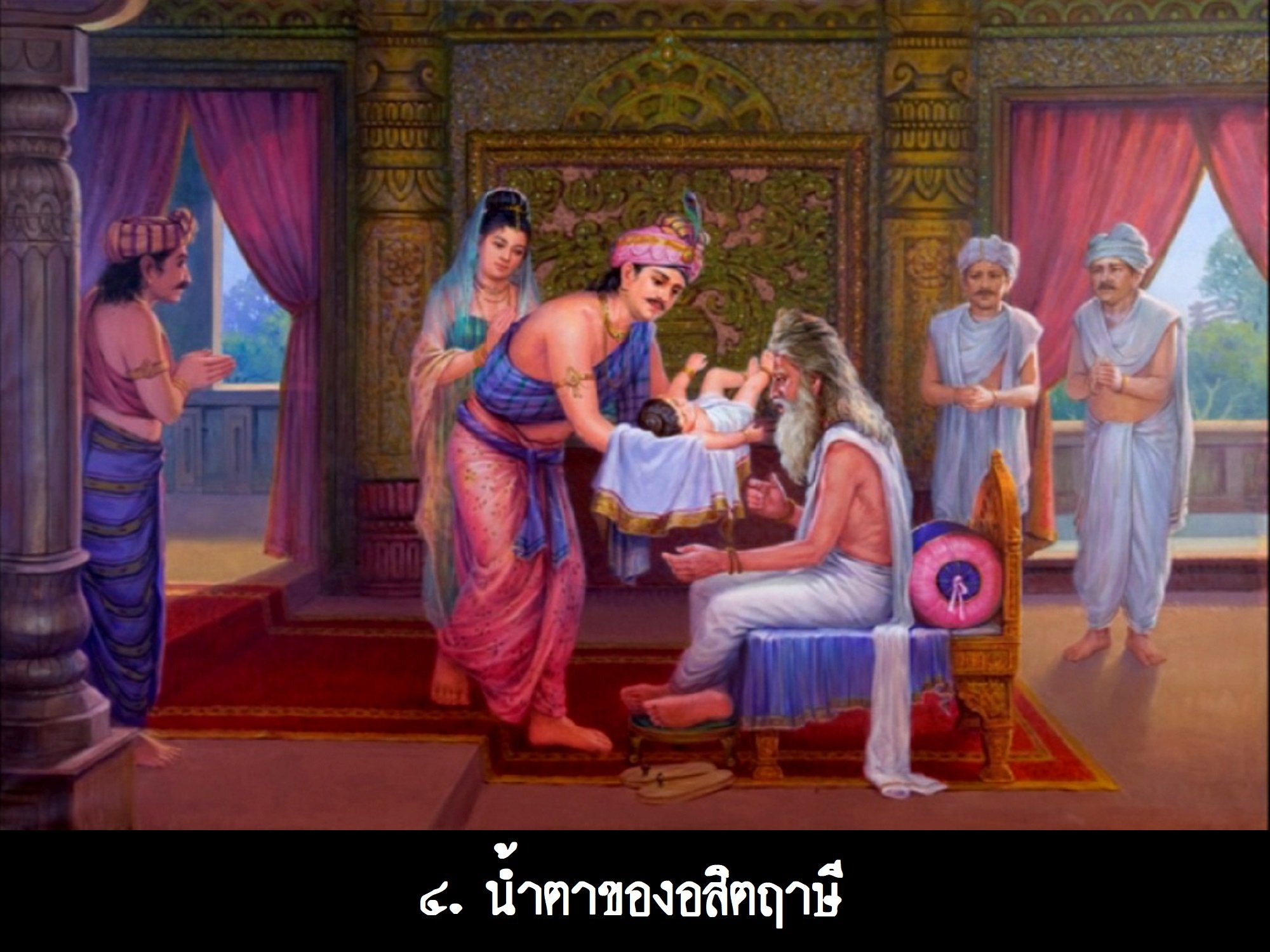
The Tears of Asita the Sage
When the royal child was newly born, the sage Asita—also known as Kāladevala or Kaṇhasiri—was a revered hermit well-known to the royal Śākya family.
Upon hearing of the birth of King Suddhodana’s son, Asita descended from the slopes of the Himalayas to visit the newborn prince.
King Suddhodana carried the infant out to present him to the sage.
Upon observing the child’s features, the sage first smiled with joy—then, to everyone’s astonishment, began to weep.
Such behavior seemed extraordinary for a saintly ascetic endowed with spiritual power.
He then explained, “I smiled because this child will one day attain enlightenment and become a Buddha.
I wept because I shall pass away before that day comes—and thus, I will not live to hear his sublime teaching.”
As recorded in the Sutta Nipāta, Nalaka Sutta, Khuddaka Nikāya:
At that time, the Śākyas brought the child, resplendent as refined gold from a master goldsmith’s crucible,
radiant with royal glory, and with a lustrous, golden-hued complexion—to be beheld by the sage Asita.When Asita saw the prince, radiant like a flame, like the full moon rising in the sky,
his brilliance outshining the stars, like the sun breaking through the clouds in the autumn sky—
he was filled with delight, and deep joy welled up within him.
Holding the noble infant in his arms, Asita—versed in the science of bodily marks—examined the signs and was overcome with reverence.
He declared:
“This prince has none above him—he is supreme among beings who walk on two legs.”
Then, remembering that he himself was destined to pass away and be reborn, Asita was filled with sorrow, and tears flowed from his eyes.
The Śākyas, seeing the sage weep, asked in concern whether danger would befall the royal child.
The sage replied gently, to ease their worry:
“It is not because of any misfortune I foresee in the child that I weep. Nor will he come to harm.
The prince is not lowly in any way—so, fear not, O great kings.”This child will attain the supreme knowledge of omniscience.
He will realize Nibbāna, utterly pure.
He will work for the welfare of the many.
He will proclaim the Wheel of Dhamma.
His holy life will spread far and wide.
![]()

Be the first to comment on "4.The Tears of Asita the Sage"